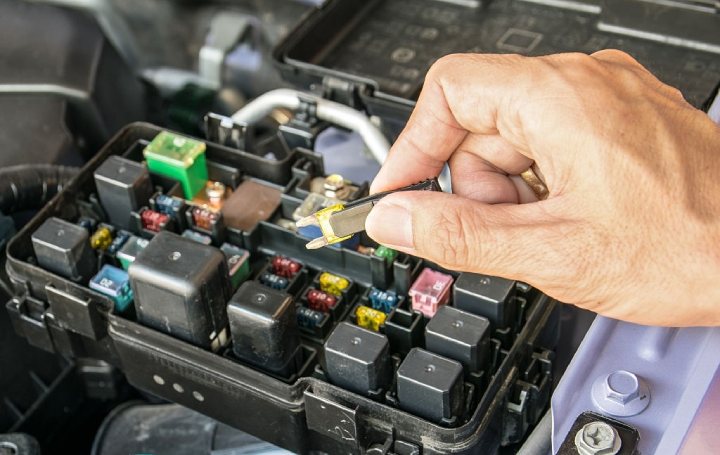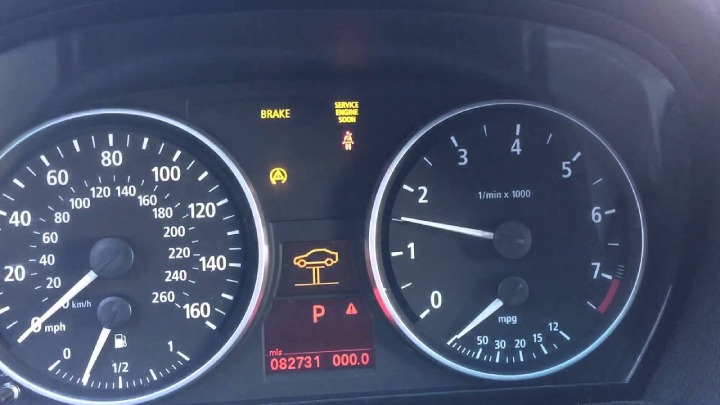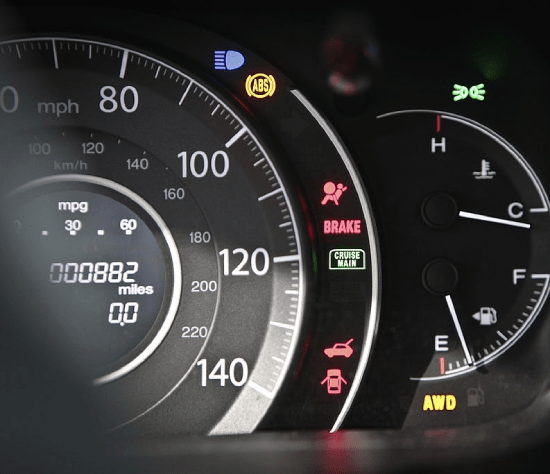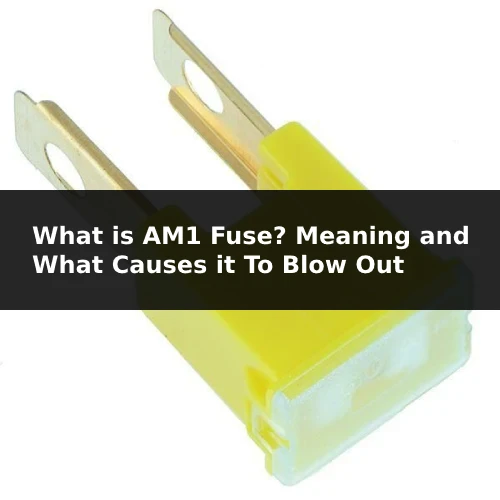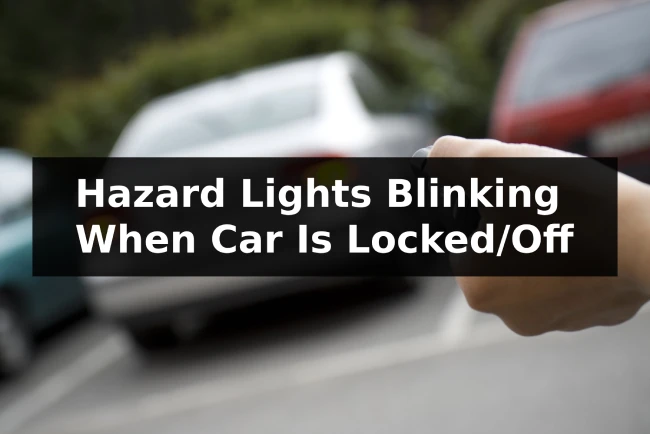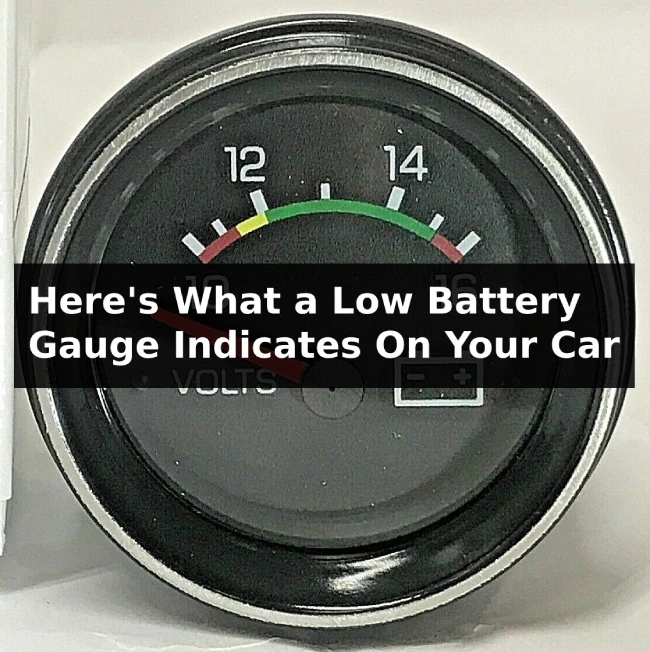The majority of vehicles today are equipped with a traction control system which helps keep the vehicle in position when there is a loss of traction in any of the wheels. When a wheel starts slipping, the system automatically transfers power from the wheel to the sturdier wheels for more control.
- Here's the Main Cause of Your Car Shaking if TC Light ON
- Will a Speed Sensor Throw a Code?
- How Do You Know If a Wheel Speed Sensor Is Bad?
- How Much Does It Cost to Replace a Wheel Speed Sensor?
- Can a Wheel Speed Sensor Cause the Car to Shake?
- Will a Misfire Cause the Traction Control Light to Come On?
- Does Traction Control Make Your Car Shake?
- Is It Safe to Drive the Car If the Traction Control Warning Is On and the Car Is Shaking?
- In Summary
Here’s the Main Cause of Your Car Shaking if TC Light ON
The traction control light can be triggered by a variety of reasons but they do not all come with an additional symptom of the car shaking or jerking.
The traction light mostly comes on when the system is turned off. Therefore, if the traction control warning comes on alongside car jerking, the main cause is usually a bad wheel-speed sensor.
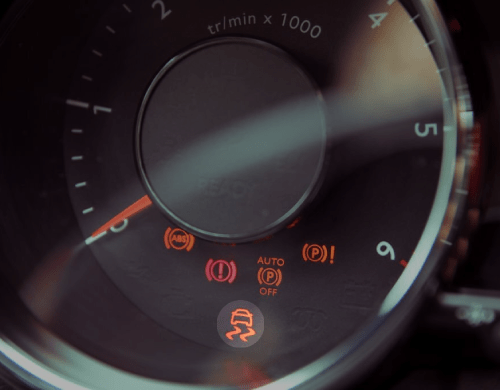
Bad wheel-speed sensor
A bad wheel-speed sensor (ABS sensor) will not only trigger the warning light of the traction control system but the ABS as well, and the Check Gauge light if applicable. There are situations where a bad ABS sensor will cause the transmission to act weirdly or shift improperly.
A wheel sensor is a small device attached to the wheels of a car to measure the number of revolutions.
However, the wheel speed sensor does more than that. It gathers data from the wheels of the car and sends them via the ECU to the ABS and traction control system.
The ABS needs information on the speed of the wheels of the car to know the amount of pressure to apply to stop the wheels when the brake is applied.
The traction control light does not come on unless the system is turned off by the driver. Therefore, if you did not turn off this system, there is something wrong with the traction control system.
Just like the ABS, the traction control system also receives data from the wheel speed sensor to ensure that the tires do not lose traction and break loose.
Therefore, if you notice the car jerking alongside the illumination of the ABS light and traction control light, consult a professional immediately; the car is not safe to drive.
Driving for a long time with the car could cause crashes or critical accidents because the brake system has been partially crippled as well as the traction control system.
Will a Speed Sensor Throw a Code?
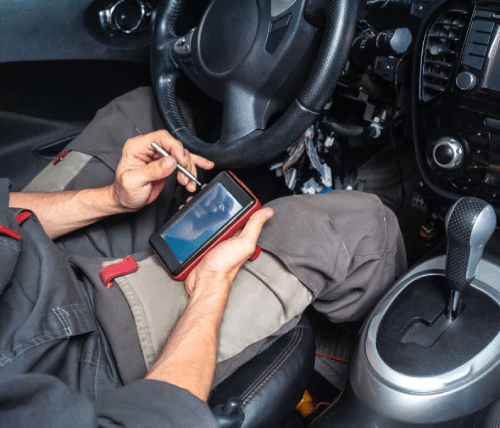
As the main role of a speed sensor is to monitor the wheel speed, the PCM will alert the ECU when the sensor fails to deliver accurate data.
Therefore, a wheel speed sensor displays an error code when the vehicle is examined with an OBD-II scanner. If the wheel sensor is faulty, the diagnostic assessment will narrow it down.
How Do You Know If a Wheel Speed Sensor Is Bad?
Since a wheel speed sensor is not an easily accessible device, detecting a fault might only be noticed on the systems it is connected to as well as the operation of the car.
Brake pedal pulsates
Since each wheel speed sensor monitors the speed of the wheels, false data might be sent to the control module of the Anti-lock Brake System. This could make the control module assume that the car is sliding off and automatically activate the antilock brakes.
When this occurs, the brake system releases brake pressure which rapidly initiates the brakes. Due to this, you might feel the brake pedal pulsate when you hit it.
Illumination of warning lights
Most cars on the market today are equipped with an electronic stability system, a traction control system, and an ABS that helps keeps the wheels on the wheels in position and ensures safe braking.
The wheel speed sensor is a major data source for these systems; hence, if the sensors are failing, the warning lights of these systems are illuminated.
The check engine light, ABS light, and traction control light will come on the dashboard.
The speedometer stops working
This only occurs with older vehicle models and it is not a common occurrence. However, if you notice your speedometer stops working alongside other symptoms’ manifestations, it might be a result of a bad wheel sensor.
Regardless of the cause of a broken speedometer, try to repair it as soon as possible. A broken speedometer could place lives at risk and could also earn you a speeding ticket because it becomes difficult to ascertain how fast you are going.
Broken Anti Lock brakes
The ABS relies on information from the wheel speed sensors to determine if the wheels are locking up as a result of hard braking.
However, if the module does not receive appropriate signals from the wheel sensor, the ABS control module is unable to make an accurate estimation and does not initiate the Antilock brakes even when needed.
Cripple in Traction Control and Stability control systems
As a source of data for these systems, wheel sensors can cripple them. If you drive in poor weather and your car loses traction, you might be unable to retain traction on the road and your tires might end up slipping.
How Much Does It Cost to Replace a Wheel Speed Sensor?
The average cost of replacing a bad wheel speed sensor is between $200 to $250, depending on the make and model. The time required to replace the sensor is around one hour, which can be as costly as $150, while an OEM part is usually around $100.
I know, you did not expect to pay such a high price for a wheel speed sensor, however, its location usually makes things worse. An experienced mechanic will require just under an hour to get the sensor off the car and install a new one.
You can save some money by using an aftermarket sensor, which usually costs around $50, but keep in mind that this might void the car’s warranty.
As usual, the cheapest way to have your car fixed is by doing it yourself. You would be looking at just under $100 to replace a bad wheel speed sensor if you have the knowledge and tools required.
For a better understanding of the times required to perform a car repair, check out our guide on how long a car service should take.
Can a Wheel Speed Sensor Cause the Car to Shake?
Yes, a wheel speed sensor can cause a car to shake when it sends wrong signals to the driver assist systems – the traction control system, the Antilock brake system, and the electronic stability system.
A muddle in the system causes the illumination of warning lights and an impact on the normal functioning of the car, such as making it shake. If you have a faulty wheel sensor, your brakes might lock and cause the car to vibrate.
Will a Misfire Cause the Traction Control Light to Come On?
Yes, it is possible. However, this depends on the severity of the misfire. If the misfire creates enough jolt to cause the traction control system to detect a change in the stability of the car, the light might be triggered.
The best approach is to grab a scan tool and start looking for any error codes. This will tell you what the problem is. If you do not have or know how to use a scan tool, pop into your local Autozone or any other repair shop, and they will be able to read any error codes.
Does Traction Control Make Your Car Shake?
Yes, the traction control system can definitely make your case shake when driving. Here’s how! When the traction control system received false readings (from a bad wheel speed sensor), it will try to adjust the car to a false problem.
Another system that can cause your car to shake by receiving a false wheel speed sensor reading is the ABS.
Is It Safe to Drive the Car If the Traction Control Warning Is On and the Car Is Shaking?
While technically, the car can still be driven, it is not ideal to do so. A shaking car can definitely pose a risk to your safety and other traffic participants. However, you might be able to drive the car, at low speeds, to your local repair garage to have it inspected.
If the shaking is really bad, you should seek a mobile technician that can come to your place and have the car fixed.
Ultimately, if you can’t find any mobile mechanic in your area, you might have to arrange for a tow truck to come and transport the vehicle to a repair shop.
In Summary
If you experience these symptoms; illuminating traction control light, ABS warning light, and car jerking; it is best to park the car as soon as possible in order not to cause a crash. Once you notice this, reduce your driving speed till you successfully park the car.
You might use a diagnostic scanner to identify the exact issue. Lastly, an expert should be hired to take a look at the car.
Sources
AutoFocus: Making sense of wheel speed sensors
Traction Control: How It Works and When to Use It
Every since I was a little boy, I can remember spending the afternoons in my dad’s repair shop. I got my first car at 16 and it was the best feeling ever!
I have contributed to various automotive publications but decided it’s finally time to settle for something constant.

